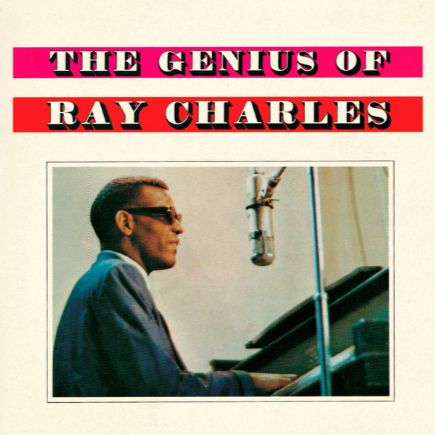Come Rain or Come Shine: entre passion inaltérable et lyrisme sophistiqué
Composé en 1946 par Harold Arlen, sur des paroles de Johnny Mercer, Come Rain or Come Shine s’impose comme l’un des standards les plus expressifs du répertoire vocal jazz. Créée pour la comédie musicale St. Louis Woman, cette ballade à la structure harmonique sobre mais subtile a traversé les époques, portée par une intensité émotionnelle rarement égalée.
Le spectacle fut un échec commercial et fut suspendu après 113 représentations, mais Come Rain or Come Shine, lancée sur scène par Ruby Hill et Harold Nicholas, deviendra très populaire. Elle mêle le lyrisme d’Arlen, maître des contrastes mélodiques, à la poésie épurée de Mercer, dans une déclaration d’amour inconditionnelle qui transcende les styles et les générations.
Derrière une apparente simplicité se cache une œuvre d’une grande richesse interprétative. Chaque reprise révèle une facette différente: dramatique chez Billie Holiday, feutrée chez Sarah Vaughan, brillante et théâtrale avec Judy Garland ou Barbra Streisand, ancrée dans le swing pour Ray Charles, ou réinventée en jazz modal par Bill Evans.
Ce pouvoir de réinvention tient à la souplesse du matériau initial: une mélodie large, ouverte, propice à la variation, et des accords qui offrent un terrain fertile pour l’improvisation. L’interprétation de Diane Schuur en 1986 a reçu un Grammy pour le meilleur enregistrement vocal de jazz féminin.
Ray Charles magnifie Come Rain or Come Shine
Le 6 mai 1959, à New York, Ray Charles enregistre sa version de Come Rain or Come Shine pour l’album The Genius of Ray Charles. Entouré d’Allen Hanlon (guitare), Bob Brookmeyer (trombone), Wendell Marshall (contrebasse) et Ted Sommer (batterie), le pianiste-chanteur signe une interprétation qui comptera parmi les plus élégantes de sa carrière.
Sur la première moitié du disque, quelques membres de son big band rejoignent des musiciens des orchestres de Count Basie et de Duke Ellington. Sous la plume alerte de Quincy Jones, Ray Charles revisite six titres énergiques, dont Let the Good Times Roll et Deed I Do, ponctués de solos saillants signés David “Fathead” Newman (saxophone ténor), Marcus Belgrave (trompette) et, sur Two Years of Torture, Paul Gonsalves (ténor).
La seconde partie se tourne vers la ballade. Ralph Burns convoque un orchestre à cordes pour soutenir le chant de Ray Charles sur six standards, parmi lesquels Come Rain or Come Shine et Don’t Let the Sun Catch You Cryin’. Libéré des accents soul de son piano et de l’élan de son groupe, Charles dévoile ici une voix souveraine, d’une intensité rare, qui sublime un répertoire jusque-là associé à Frank Sinatra et souligne, par sa seule présence vocale, la profondeur émotionnelle des mélodies.
Come Rain or Come Shine: entre pasión inalterable y lirismo sofisticado
Compuesta en 1946 por Harold Arlen, con letra de Johnny Mercer, Come Rain or Come Shine se impone como uno de los estándares más expresivos del repertorio vocal del jazz. Escrita para el musical St. Louis Woman, esta balada de estructura armónica sobria pero sutil ha atravesado las décadas impulsada por una intensidad emocional pocas veces igualada.
El espectáculo fue un fracaso comercial y se suspendió tras 113 funciones, pero Come Rain or Come Shine, estrenada en escena por Ruby Hill y Harold Nicholas, alcanzó gran popularidad. Fusiona el lirismo de Arlen —maestro en contrastes melódicos— con la poesía depurada de Mercer, en una declaración de amor incondicional que trasciende estilos y generaciones.
Bajo su aparente simplicidad se oculta una obra de enorme riqueza interpretativa. Cada versión revela una dimensión distinta: dramática con Billie Holiday, íntima con Sarah Vaughan, brillante y teatral en las voces de Judy Garland o Barbra Streisand, profundamente swing con Ray Charles o reinterpretada en clave modal por Bill Evans.
Este poder de reinvención se explica por la flexibilidad del material original: una melodía amplia, abierta, que invita a la variación, y una secuencia de acordes ideal para la improvisación. La interpretación de Diane Schuur en 1986 recibió un premio Grammy al mejor registro vocal de jazz femenino.
Ray Charles sublima Come Rain or Come Shine
El 6 de mayo de 1959, en Nueva York, Ray Charles grabó su versión de Come Rain or Come Shine para el álbum The Genius of Ray Charles. Rodeado de Allen Hanlon (guitarra), Bob Brookmeyer (trombón), Wendell Marshall (contrabajo) y Ted Sommer (batería), el pianista y cantante firmó una interpretación que se cuenta entre las más elegantes de su carrera.
En la primera mitad del disco, algunos músicos de su big band se unen a integrantes de las orquestas de Count Basie y Duke Ellington. Bajo la dirección precisa de Quincy Jones, Ray Charles revisita seis temas enérgicos, entre ellos Let the Good Times Roll y Deed I Do, realzados por solos brillantes de David “Fathead” Newman (saxo tenor), Marcus Belgrave (trompeta) y, en Two Years of Torture, Paul Gonsalves (saxo tenor).
La segunda parte del álbum se orienta hacia la balada. Ralph Burns convoca una orquesta de cuerdas para acompañar la voz de Ray Charles en seis estándares, entre los cuales destacan Come Rain or Come Shine y Don’t Let the Sun Catch You Cryin’. Despojado de los acentos soul de su piano y del ímpetu de su grupo, Charles revela aquí una voz majestuosa, de una intensidad poco común, que eleva un repertorio hasta entonces asociado a Frank Sinatra y subraya, con su sola presencia vocal, la hondura emocional de las melodías.
Come Rain or Come Shine: tra passione incrollabile e lirismo raffinato
Composta nel 1946 da Harold Arlen, su testo di Johnny Mercer, Come Rain or Come Shine si è affermata come uno degli standard più intensi e suggestivi del repertorio jazz vocale. Scritta per il musical St. Louis Woman, questa ballata dalla struttura armonica sobria ma raffinata ha attraversato il tempo, sospinta da un’emozione vibrante e senza tempo.
Lo spettacolo fu un insuccesso commerciale e fu interrotto dopo 113 repliche, ma Come Rain or Come Shine, lanciata in scena da Ruby Hill e Harold Nicholas, divenne presto un brano molto popolare. Arlen, maestro nei contrasti melodici, unisce qui il suo lirismo alla purezza poetica di Mercer, in una dichiarazione d’amore assoluto che supera epoche e generi.
Dietro la sua apparente semplicità, si cela una ricchezza interpretativa straordinaria. Ogni rilettura ne svela un volto nuovo: drammatica con Billie Holiday, intima con Sarah Vaughan, teatrale e scintillante con Judy Garland o Barbra Streisand, immersa nello swing con Ray Charles, o esplorata in chiave modale da Bill Evans.
La forza di questo brano risiede nella duttilità della sua struttura: una melodia ampia, aperta, ideale per la variazione, e una progressione armonica che stimola l’improvvisazione. L’interpretazione di Diane Schuur del 1986 vinse il Grammy Award per la miglior performance vocale jazz femminile.
Ray Charles valorizza Come Rain or Come Shine
Il 6 maggio 1959, a New York, Ray Charles registra la sua versione di Come Rain or Come Shine per l’album The Genius of Ray Charles. Affiancato da Allen Hanlon (chitarra), Bob Brookmeyer (trombone), Wendell Marshall (contrabbasso) e Ted Sommer (batteria), il pianista e cantante firma un’interpretazione che resterà tra le più raffinate della sua carriera.
Nella prima metà del disco, alcuni membri della sua big band si uniscono a musicisti provenienti dalle orchestre di Count Basie e Duke Ellington. Sotto la scrittura precisa e ispirata di Quincy Jones, Ray Charles rilegge sei brani pieni di energia, tra cui Let the Good Times Roll e Deed I Do, arricchiti da assoli incisivi di David “Fathead” Newman (sax tenore), Marcus Belgrave (tromba) e, su Two Years of Torture, Paul Gonsalves (tenore).
La seconda parte del disco si apre invece al registro della ballata. Ralph Burns riunisce un’orchestra d’archi per accompagnare la voce di Ray Charles in sei standard, tra cui spiccano Come Rain or Come Shine e Don’t Let the Sun Catch You Cryin’. Privato degli accenti soul del suo pianoforte e dell’energia del suo ensemble, Charles rivela qui una voce sovrana, di rara intensità, capace di elevare un repertorio fino ad allora legato a Frank Sinatra e di mettere in luce, con la sola forza del canto, la profondità emotiva delle melodie.
Come Rain or Come Shine: unwavering passion and sophisticated lyricism
Composed in 1946 by Harold Arlen, with lyrics by Johnny Mercer, Come Rain or Come Shine stands as one of the most emotionally resonant standards in the vocal jazz canon. Written for the musical St. Louis Woman, this ballad—modest in structure yet harmonically nuanced—has endured through the decades, carried by a rare emotional intensity.
Though the show itself was a commercial failure, closing after 113 performances, Come Rain or Come Shine, first introduced on stage by Ruby Hill and Harold Nicholas, quickly gained widespread popularity. It blends Arlen’s melodic richness—he was a master of contrast—with Mercer’s distilled poetry, forming a timeless declaration of unconditional love that transcends styles and generations.
Beneath its surface simplicity lies a composition of great interpretive depth. Each version brings out a new shade: haunting with Billie Holiday, intimate with Sarah Vaughan, theatrical and radiant with Judy Garland or Barbra Streisand, grounded in swing with Ray Charles, or reimagined through modal jazz by Bill Evans.
Its versatility stems from the flexibility of its core: an open, spacious melody inviting variation, and a harmonic structure ripe for improvisation. Diane Schuur’s 1986 rendition earned her a Grammy Award for Best Female Jazz Vocal Performance.
Ray Charles elevates Come Rain or Come Shine
On May 6, 1959, in New York City, Ray Charles recorded his rendition of Come Rain or Come Shine for the album The Genius of Ray Charles. Joined by Allen Hanlon (guitar), Bob Brookmeyer (trombone), Wendell Marshall (bass), and Ted Sommer (drums), the pianist and singer delivered a performance that stands among the most refined of his career.
For the album’s first half, several members of his big band are joined by musicians from the orchestras of Count Basie and Duke Ellington. Under the sharp and elegant arrangements of Quincy Jones, Ray Charles reinvents six upbeat tracks, including Let the Good Times Roll and Deed I Do, featuring striking solos by David “Fathead” Newman (tenor sax), Marcus Belgrave (trumpet), and, on Two Years of Torture, Paul Gonsalves (tenor sax).
The second half shifts toward ballads. Ralph Burns brings in a string orchestra to support Ray Charles’s voice across six standards, including Come Rain or Come Shine and Don’t Let the Sun Catch You Cryin’. Stripped of his soul-infused piano and his band’s driving rhythms, Charles reveals here a commanding voice of rare intensity, bringing new depth to a repertoire long associated with Frank Sinatra and underscoring, through vocal delivery alone, the emotional richness of the melodies.
Autres articles – Otros artículos – Altri articoli
Harold ARLEN (15.02.1905–23.04.1986)
Count BASIE (21.08.1904–26.04.1984)
Bob BROOKMEYER (19.12.1929–15.12.2011)
Ray CHARLES (23.09.1930–10.06.2004)
Duke ELLINGTON (29.04.1899–24.05.1974)
Bill EVANS–piano (16.08.1929–15.09.1980)
Paul GONSALVES (12.07.1920–15.05.1974)
Billie HOLIDAY (07.04.1915–17.07.1959)


